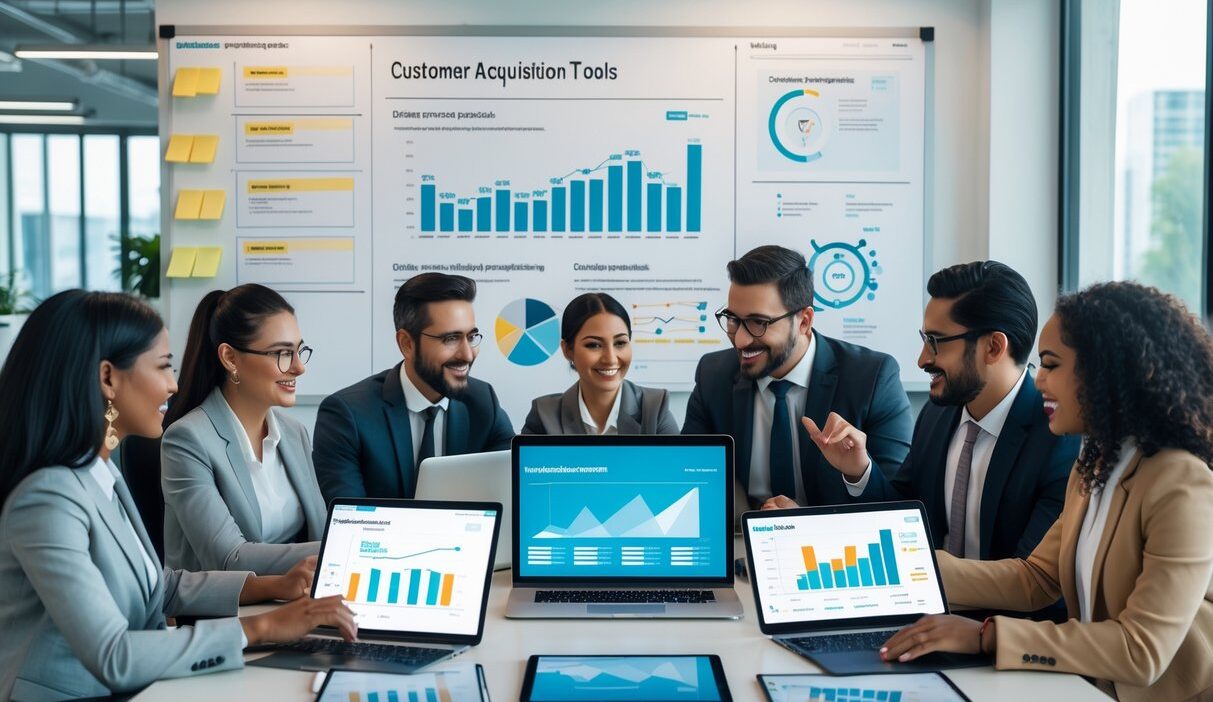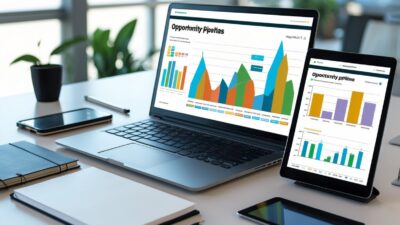Winning new customers? It’s not just luck. You need the right tools, and honestly, I’ve seen firsthand how tough it can be to grab attention, build trust, and actually get people to take action.
Customer acquisition tools are your shortcut—they streamline how you find, engage, and convert potential customers into loyal ones.
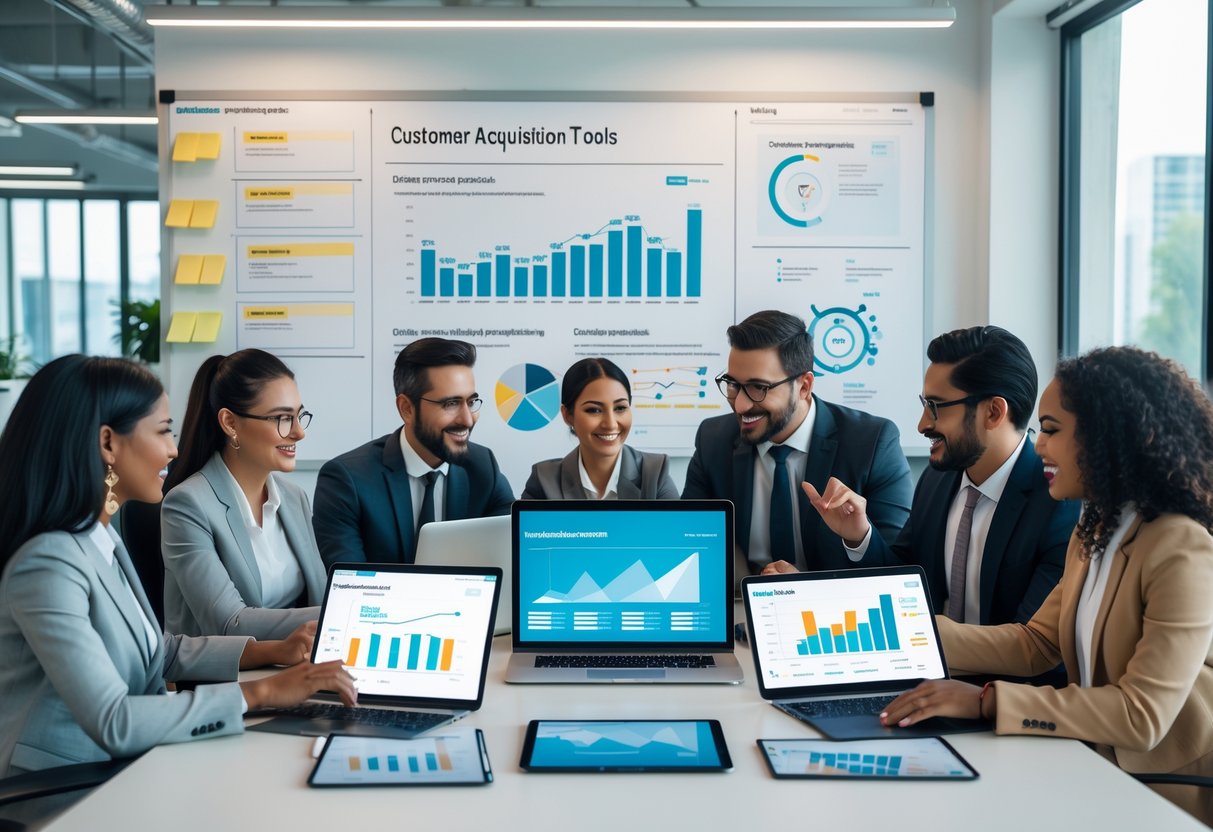
With the right mix of analytics, automation, and a dash of personalization, you can focus on what actually grows your business. No more endless guessing.
Platforms like Contentsquare and HubSpot make it easier to understand user behavior, improve campaigns, and keep all your leads in one place.
When you know which channels and tactics are actually working, you don’t waste time or money. You double down where it counts.
By the way, if you’d rather skip the hassle and just get quality leads or want a free consultation, feel free to contact me on WhatsApp at +917303556188. Why work so hard when you can just buy leads from someone who’s already done the heavy lifting?
Key Takeaways
- Customer acquisition tools make it way easier to attract and convert new customers
- Using data-driven platforms means your campaigns and user experience improve
- Tracking and tweaking your approach is what really boosts long-term growth
Understanding Customer Acquisition Tools
I use customer acquisition tools to spot, attract, and convert potential customers without wasting time. These tools help me manage the customer journey, lower acquisition costs, and actually track what’s working at each stage of the funnel.
What Are Customer Acquisition Tools
Customer acquisition tools are software that help me find and convert new customers. They cover every step, from getting leads to sealing the deal.
I lean on things like CRM systems, email automation, and analytics dashboards to keep tabs on engagement and performance. Tools like HubSpot Sales Hub or Google Analytics let me see user behavior, manage campaigns, and make data-based tweaks.
These tools pull together your marketing—social, search, email—so everything’s working together. That way, leads don’t fall through the cracks.
Benefits for Modern Businesses
Customer acquisition tools save me hours of manual work. Automation handles boring stuff like lead scoring and follow-up emails, so I can actually focus on strategy and building real relationships.
I get data-driven insights that help me make decisions. Analytics from Nestify show me which campaigns are worth the money, helping me cut down my customer acquisition cost (CAC).
Personalization is way easier, too. I can slice up my audience by behavior or demographics and send the right message at the right time. That means more engagement and better conversions.
Key Features to Look For
When I’m picking tools, I want features that actually move the needle.
Here’s what I look for:
| Feature | Purpose |
|---|---|
| Automation | Handles repetitive marketing tasks |
| Analytics & Reporting | Tracks performance and conversions |
| CRM Integration | Connects sales and marketing info |
| Personalization | Sends targeted messages |
| Multi-Channel Support | Reaches customers everywhere |
If a tool doesn’t scale or play nice with my other systems, it’s not worth it. I want something that grows with me and keeps my process smooth.
Core Categories of Customer Acquisition Tools
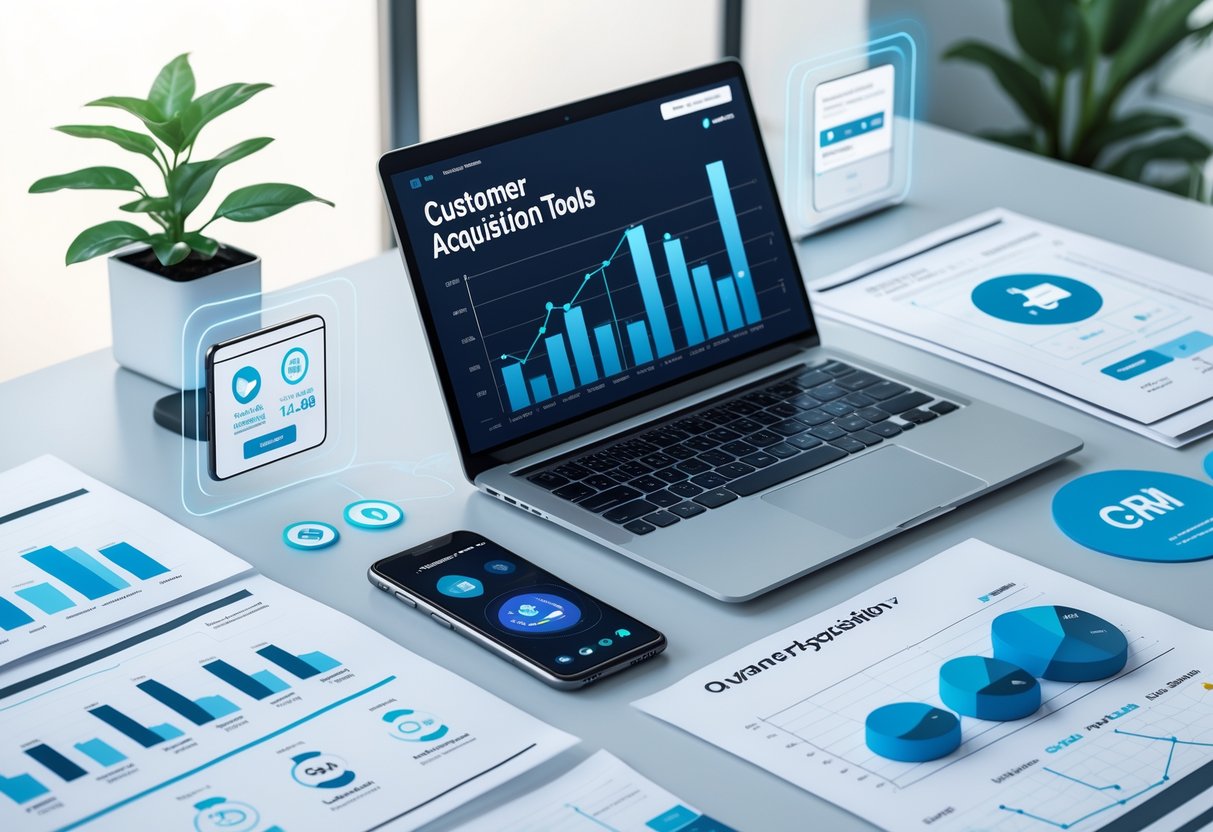
I use a mix of systems to attract, track, and convert new customers. The best tools help me manage leads, automate outreach, and analyze data so I can keep improving.
CRM and Lead Management Platforms
CRMs are my go-to for organizing customer data and managing leads from the first “hello” to the final sale. Platforms like Salesforce and HubSpot keep everything in one place—communication, interactions, account details, you name it.
These tools help me qualify leads by scoring them on engagement or intent. I can focus on the ones who are actually interested.
A solid CRM also tracks your pipeline, so you see exactly where each deal stands. If something’s stuck, you know where to jump in.
| Feature | Benefit |
|---|---|
| Lead tracking | All your customer info is organized |
| Automated follow-ups | No more missed opportunities |
| Reporting dashboards | See what’s working in sales |
Marketing Automation Solutions
I use marketing automation platforms to take care of repetitive stuff like sending emails, posting on socials, and nurturing leads. Tools like HubSpot and Mailchimp let me set up workflows that keep things moving even when I’m busy.
Automation keeps my outreach consistent without me having to babysit it. I can segment audiences, personalize campaigns, and trigger actions based on what people actually do.
If someone abandons their cart, the system fires off a reminder or a little discount. This kind of behavior-based marketing just works—it gets more engagement and better conversion rates while saving me hours.
Key functions:
- Email and campaign automation
- Lead nurturing workflows
- Performance analytics
Analytics and Data Insights Tools
Analytics tools are how I know if my acquisition strategy is working. Platforms like Google Analytics and Mixpanel track where my traffic comes from, conversion rates, and what users do on my site.
Data analytics show me which channels bring in quality visitors and which ones are just eating budget. I can see session duration, bounce rates, and conversion paths.
When I combine the numbers with behavior analysis, I get a real sense of what’s driving engagement. That way, I know where to put my money and effort.
If you want to skip the headaches and just buy leads that actually convert, message me on WhatsApp at +917303556188. Seriously, why spend all your time figuring this out alone?
Top Customer Acquisition Tools and Their Use Cases
Digital tools help me attract, engage, and convert customers faster. The right platforms let me run campaigns, test landing pages, and chat with visitors in real time to boost conversion rates.
Email Marketing and Campaign Tools
Email marketing tools are still the best way to talk to customers directly. I like Mailchimp—it’s simple, and I can design, automate, and track email campaigns without feeling like a robot.
I segment audiences, test subject lines, and schedule follow-ups to keep people engaged.
With automation, I send welcome messages, reminders, or discounts without lifting a finger. Leads stay warm, and people keep coming back.
| Key Features | Benefits |
|---|---|
| Segmentation | Target your message to the right people |
| A/B Testing | See what actually gets clicks |
| Automation | Save time and stay consistent |
Mailchimp also connects with my CRM, so sales and marketing are always on the same page.
Landing Page and A/B Testing Platforms
Landing pages are where traffic turns into leads. I use Unbounce because I don’t need a developer—it’s all drag-and-drop. I can launch new pages for ads, social, or email campaigns in minutes.
Unbounce makes A/B testing easy, so I can see which page or message actually works. I tweak headlines, images, or buttons based on real numbers, not just gut feeling.
For example, I might test two headlines—one about price, one about quality—and see which wins more signups.
This process means my ad budget goes further, and conversions keep climbing.
Live Chat and Chatbot Solutions
Live chat and chatbots let me talk to visitors instantly. Platforms like Drift offer automated bots and real-time messaging, so I never miss a lead—even if it’s 2 a.m.
A chatbot can answer FAQs, qualify leads, or book meetings before I even get involved. That’s faster for everyone.
Why use live chat tools?
- Give visitors instant answers
- Collect contact info for follow-up
- Personalize responses based on what people are doing
Mixing chat automation with real human support means I help customers fast and still build trust. If you’d rather just get leads handed to you, contact me on WhatsApp at +917303556188. It’s honestly much easier.
Optimizing Customer Acquisition Through Digital Channels
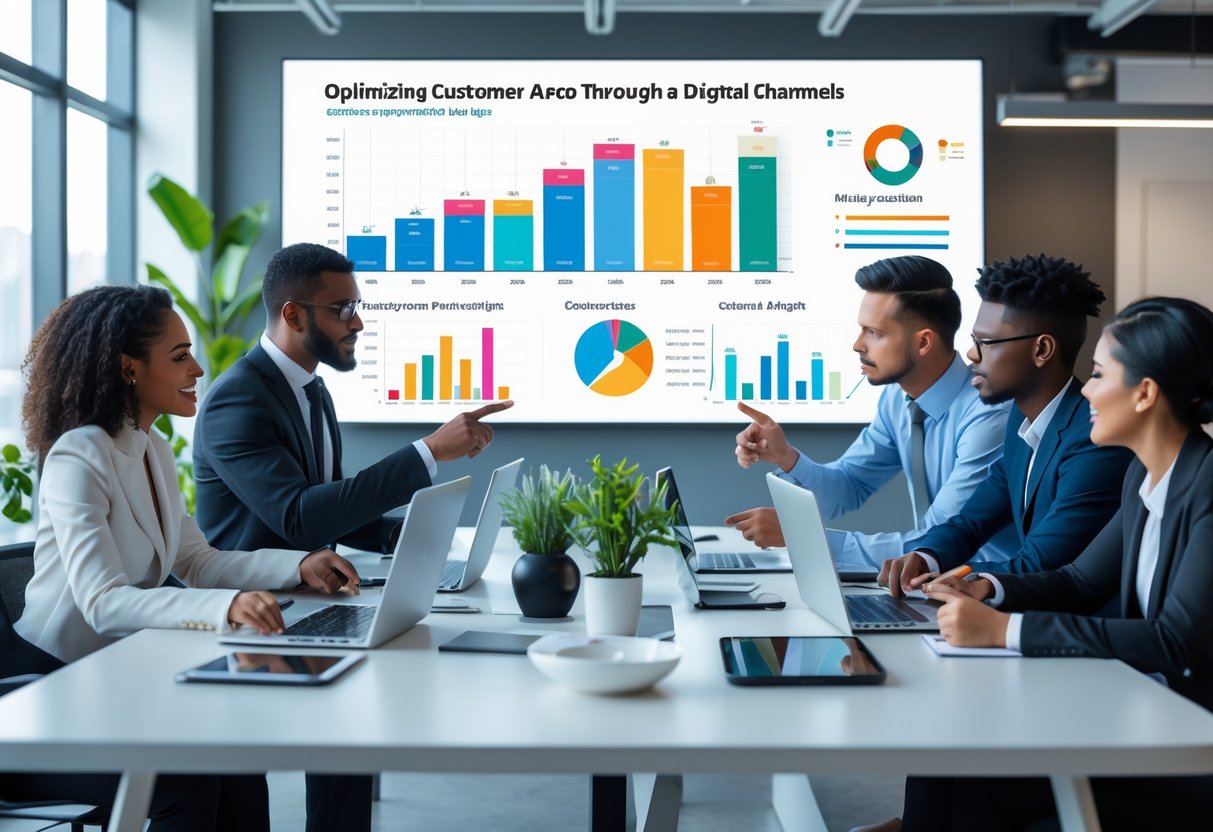
I use digital channels to reach new customers, measure engagement, and fine-tune campaigns using real data. The best results come from mixing social media, search, and feedback tools until you find what actually works.
Social Media Management and Paid Advertising
Social media is huge for customer acquisition. I rely on platforms like Instagram, TikTok, and YouTube to reach and engage new customers. Tools like Hootsuite help me schedule posts, track engagement, and manage everything from one place.
Paid ads let me target by age, location, and interests. I can run promos, feature products, and check results to see where my money is working hardest.
Here’s how I compare results:
| Channel | Key Metric | Goal Example |
|---|---|---|
| Click-through rate | 2.5% | |
| TikTok | Engagement rate | 8% |
| YouTube | View duration | 60 seconds |
I focus my budget on the channels that bring in the best leads. No point in wasting cash on what doesn’t convert.
SEO and Content Marketing Tools
Showing up in search is still key for customer acquisition. I use SEO tools like SEMrush and Ahrefs to find what my audience is searching for and track how I’m ranking.
These tools help me spot content gaps and fix things like titles, meta descriptions, and internal links. I keep an eye on backlinks so my site stays trustworthy.
Content marketing brings in organic traffic—blog posts, videos, guides, you name it. When I connect SEO data with analytics, I see which topics bring the right visitors and what needs work.
Referral and Feedback Solutions
Referral programs are underrated. I use ReferralCandy to set up referral programs that reward people for bringing in friends—think discounts or gift cards.
This turns happy customers into promoters. I track referral traffic and see which offers work best.
Feedback matters, too. I collect opinions with post-purchase surveys and website widgets to find out what customers love or what confuses them. These insights help me tweak my messaging and make more sales—no need to guess.
If you’re tired of doing all this yourself and want to buy leads that actually convert, just reach out on WhatsApp at +917303556188. Feel free to contact me anytime. It’s honestly smarter to let someone else do the heavy lifting—why not make your life easier?
Enhancing Customer Acquisition Strategies

I care a lot about understanding user behavior and making conversion smoother. I’m always trying to create experiences that just feel right for customers.
Blending data insights with design and a little testing, I tweak each interaction to be more relevant and easier to finish. It’s not rocket science, but it works.
Audience Segmentation and Personalization
First, I break down my target audience into smaller groups—think location, interests, or even what they buy. This audience segmentation lets me craft messages that actually hit home for each group.
When I use personalized messaging, people engage more and click more. I’ll set up custom email campaigns or landing pages for every segment I care about.
Tools like HubSpot and Mailchimp make all this simpler. They automate content delivery based on what users do, so I don’t have to sweat every detail.
I keep an eye on performance data and tweak my approach as needed. If a certain message or offer works, I double down on it and adjust the rest.
Conversion Rate Optimization
I use conversion rate optimization to turn more visitors into paying customers. I dig into heatmaps and session recordings to see where people click, scroll, or just bail.
If I spot a layout hiccup or a confusing call to action, I’ll fix it. Sometimes, it’s as simple as moving a button or shortening a form.
I run A/B tests with platforms like Optimizely. Small tweaks—like button color or headline—can make a surprising difference.
I track conversion rates, bounce rates, and how long people stick around. The data doesn’t lie; if something works, you see it right away.
Mobile and User Experience Optimization
I make sure every step of the customer journey works on mobile. Seriously, most folks browse and buy on their phones now.
I test how pages load, how forms work, and whether navigation feels natural on a small screen. If something’s clunky, I fix it.
A smooth user experience keeps people around longer. I use session replays and heatmaps to spot where users get stuck.
Simple layouts, quick load times, and clear CTAs help people interact and convert. I try to update my designs often to keep up with new devices and habits.
Measuring and Refining Customer Acquisition Efforts
I rely on hard data to see how well my customer acquisition strategies perform. Tracking key performance indicators (KPIs) and analyzing results helps me make smarter improvements.
Tracking Metrics and KPIs
I stick to a few key metrics to gauge how well I attract and convert customers. The big ones are Customer Acquisition Cost (CAC), Conversion Rate, and Customer Lifetime Value (CLV).
| Metric | What It Measures | Why It Matters |
|---|---|---|
| CAC | Average cost to gain a new customer | Reveals cost efficiency |
| CLV | Total revenue from a customer | Guides spending limits |
| Conversion Rate | Percentage of leads turning into customers | Shows campaign effectiveness |
I use HubSpot’s analytics and Google Analytics to see which channels actually deliver. If CAC goes up but CLV doesn’t, it’s time to rethink my targeting or creative.
I keep an eye on Return on Ad Spend (ROAS), too. If an ad channel isn’t pulling its weight, I shift my budget elsewhere.
Data-Driven Decision Making
Analytics guide almost every move I make. Data from CRM, ad dashboards, and email platforms tells me which messages and channels work best.
When I see people dropping off in the funnel, I dig in to figure out why. If they’re clicking ads but not signing up, I’ll try a new landing page or a clearer call to action.
Coupler.io’s analytics guide shows how integrated dashboards can make life easier. Automation means I can react fast, without drowning in manual reports.
I use predictive analysis to guess how changes might impact conversions. It’s not always perfect, but it beats flying blind.
Balancing Acquisition and Retention
I don’t treat acquisition and retention like separate things. Retaining customers lowers CAC and boosts CLV, so it’s a win-win.
I track churn right alongside acquisition. If churn creeps up, I look at onboarding, support, and loyalty programs.
By mixing acquisition insights with retention data, I can target high-value customers who stick around. That’s the sweet spot.
If you’d rather not stress over all these metrics and strategies, I get it—why work so hard? If you want to buy leads or need a quick consultation, just contact me on WhatsApp at +917303556188. Feel free to reach out anytime. I’ll save you the hassle.
Frequently Asked Questions
I focus on the tools and methods that actually help attract, engage, and convert new customers. Let’s be honest, not every tool fits every business, so it’s worth knowing what matters for your industry.
What are the most effective tools for improving customer acquisition rates?
In my experience, automation, analytics, and personalization tools work wonders. Email marketing software, social media ad managers, and analytics dashboards help me spot high-performing campaigns and fine-tune targeting.
Platforms listed in The 10 Best Customer Acquisition Tools + Software in 2025 can really move the needle by focusing your efforts where they count.
Which free tools can startups use for customer acquisition?
If you’re on a tight budget, I’d go with free tools like Google Analytics, HubSpot CRM, and Mailchimp’s free plan. They let you track engagement and manage leads without spending a dime.
These options are great for testing strategies before you go all-in, as explained in Customer Acquisition Cost – Definition, FAQs & How HubSpot Helps.
How do customer acquisition strategies vary across different industries?
Honestly, it depends a lot on your customer’s habits. E‑commerce brands lean on digital ads and influencers, while B2B companies often use targeted content and email outreach.
Strategies and Tools to Dominate Customer Acquisition in 2025 points out that tailoring your approach to your industry’s journey makes a big difference.
What role do CRM tools play in acquiring new customers?
CRM tools help me organize leads, track every interaction, and personalize follow-ups. They keep my communication on point and make sure I don’t miss any opportunities.
By syncing CRM with marketing tools, I can see the full acquisition funnel and measure performance across every channel. What is customer acquisition? Tools, ROI, and 2025 strategy. explains this well.
Can you describe the customer acquisition funnel and its key stages?
I see the funnel as a few steps: awareness, interest, consideration, and conversion. Each stage needs different tools and messages to nudge prospects forward.
The Customer Acquisition Journey for Ecommerce: The Complete Guide explains how tuning each stage can boost conversions and cut acquisition costs.
If you’re tired of figuring all this out yourself, it’s honestly easier to let someone else handle it. Feel free to contact me on WhatsApp at +917303556188 for a quick chat or to buy leads. I’m always happy to help—no pressure, just results.
What are the essential features to look for in a customer acquisition tool?
Honestly, when I’m picking a tool, I want automation, analytics, and easy integration. If it can scale as my needs grow, that’s even better.
These features don’t just save time—they make everything run smoother and help you avoid those annoying mistakes. Why bother doing it all yourself when you can just use a smart tool?
If you’re tired of the trial-and-error game, I get it. I’ve seen so many people waste hours trying random platforms.
You might want to check out this article: How to Avoid Common Pitfalls of Customer Acquisition Tools. It’s got some solid advice.
But honestly, if you want to skip the hassle and start getting real results, just message me on Whatsapp at +917303556188. Feel free to contact me for a quick consultation or if you’re ready to buy leads—I’ll make it easy for you. Why work so hard when you can just get the leads you need?
